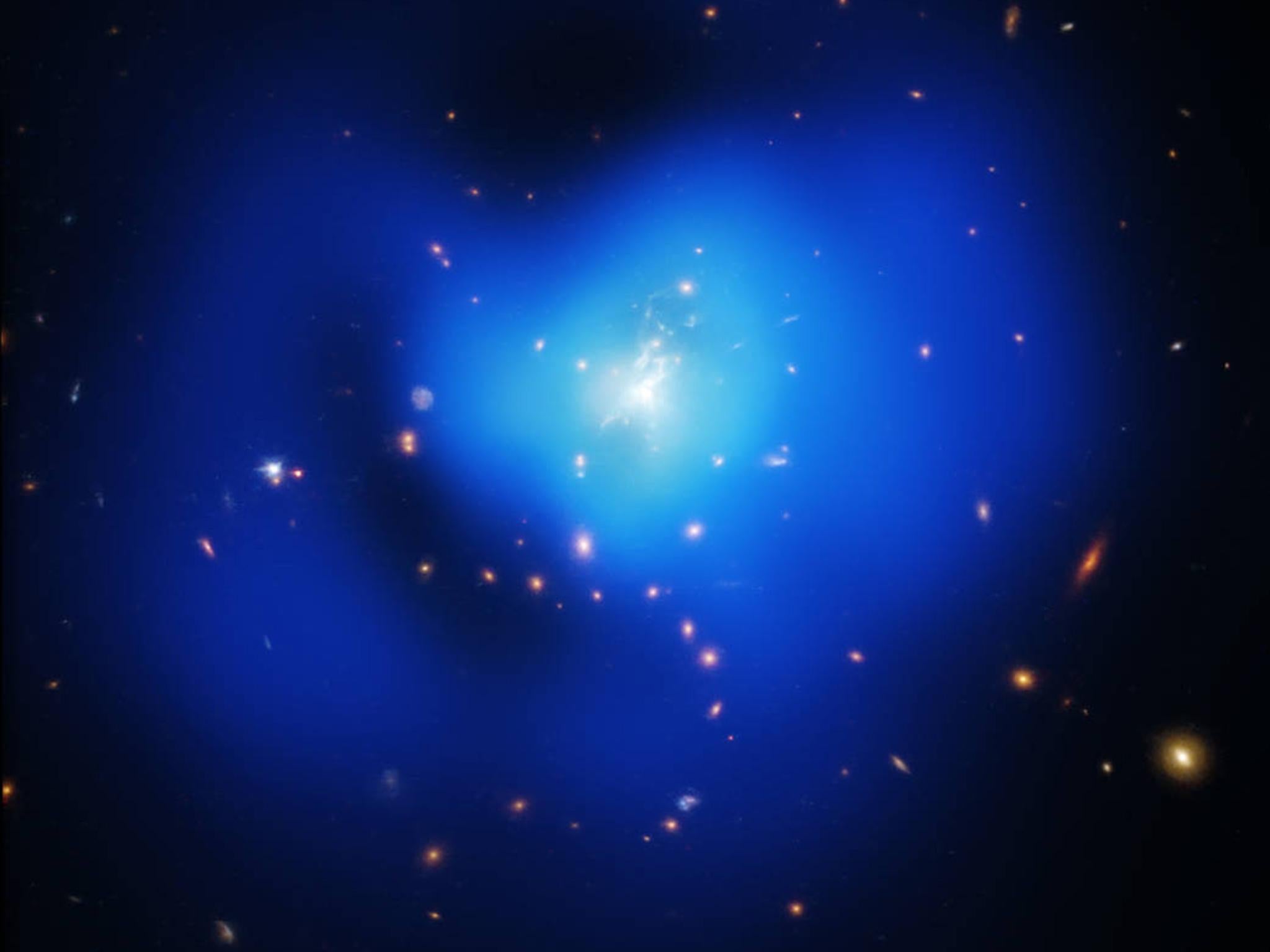Scientists take ‘remarkable’ step towards discovering true nature of dark matter
Physicist hails the ‘beautiful’ and ‘ingenious’ methods used in the study, which found a likely mass for what could be the fundamental building block of dark matter

Your support helps us to tell the story
From reproductive rights to climate change to Big Tech, The Independent is on the ground when the story is developing. Whether it's investigating the financials of Elon Musk's pro-Trump PAC or producing our latest documentary, 'The A Word', which shines a light on the American women fighting for reproductive rights, we know how important it is to parse out the facts from the messaging.
At such a critical moment in US history, we need reporters on the ground. Your donation allows us to keep sending journalists to speak to both sides of the story.
The Independent is trusted by Americans across the entire political spectrum. And unlike many other quality news outlets, we choose not to lock Americans out of our reporting and analysis with paywalls. We believe quality journalism should be available to everyone, paid for by those who can afford it.
Your support makes all the difference.Scientists may have taken a giant step towards solving one of the great mysteries of astronomy – what the “dark matter” thought to make up 85 per cent of the Universe actually is.
The existence of this vast amount of mysterious unseen material is needed to explain the way galaxies rotate.
If they only consisted of the stars we can see, the forces involved would see stars flying off in all directions. The extra mass, and therefore extra gravity, is required to explain why this does not happen.
In 1977, researchers came up with a theory that dark matter consisted of hypothetical particles called axions, much like Professor Peter Higgs’s proposal for a hypothetical particle to explain why things have mass in the 1960s. The discovery of the “Higgs boson” at the CERN Large Hadron Collider in 2013 resulted in a Nobel Prize for Professor Higgs, of Edinburgh University, and Belgian physicist Francois Englert.
Actual evidence of the axion has remained elusive over the decades.
But now researchers have used a supercomputer to calculate what the mass of an axion would be if it does make up most dark matter.
They found it would be between 50 and 1,500 micro-electronvolts – or up to 10 billion times lighter than an electron, according to a paper in the journal Nature.
This crucial bit of evidence will allow physicists to search for this incredibly tiny particle in the real world. Finding out the nature of dark matter would be on a par with the discovery of the Higgs boson.
Researcher Dr Andreas Ringwald, of the DESY research centre in Germany, said: “Dark matter is an invisible form of matter which until now has only revealed itself through its gravitational effects. What it consists of remains a complete mystery.
“The adjective ‘dark’ does not simply mean that it does not emit visible light. It does not appear to give off any other wavelengths either – its interaction with photons must be very weak indeed.”
He said that knowing what kind of mass an axion might have was “extremely helpful” to those looking for one.
“Otherwise the search could take decades, because one would have to scan far too large a range,” Dr Ringwald said.
Professor Zoltán Fodor, of Wuppertal University in Germany and Eötvös University in Hungary, who led the research, suggested their findings would significantly shorten that timescale.
“The results we are presenting will probably lead to a race to discover these particles,” he said.
According to their calculations, there should be a vast amount of axions – if they exist.
There would need to be an average of 10 million axions in every cubic centimetre of the universe. And, because dark matter clumps together, the Milky Way should have about a trillion axions per cubic centimetre.
In an article published in Nature, Dr Maria Paola Lombardo, of the National Institute of Nuclear Physics in Italy, praised the high quality of the study.
She said the scientists had been able to calculate “the expected mass of the axion with unprecedented accuracy, a result that could be useful for understanding the properties of this mysterious particle and directing strategies for its detection”.
They had done so, Dr Lombardo said, by using a “remarkable degree of accuracy and sophistication”, “an admirable combination of new ideas and an ingenious use of established technqiues”, and “a beautiful strategy” to overcome one potential problem.
“If axions exist, they would have been produced abundantly during the earliest moments of the Big Bang,” Dr Lombardo added.
“Let us hope that this remarkable study will motivate researchers to further investigate the properties of the axion, with the aim of giving experiments the robust theoretical input that they need.”
Join our commenting forum
Join thought-provoking conversations, follow other Independent readers and see their replies
Comments